Key takeaways:
- Anti-war activism is a collective movement driven by shared values, urging reflection on personal complicity in violence.
- Painting serves as a powerful medium for expressing complex emotions and sparking dialogue around the human costs of conflict.
- Symbolism, color choice, and texture are key techniques in creating impactful resistance-themed art that resonates with viewers.
- Sharing art fosters community dialogue and challenges preconceived notions, highlighting the role of artists in advocating for change.
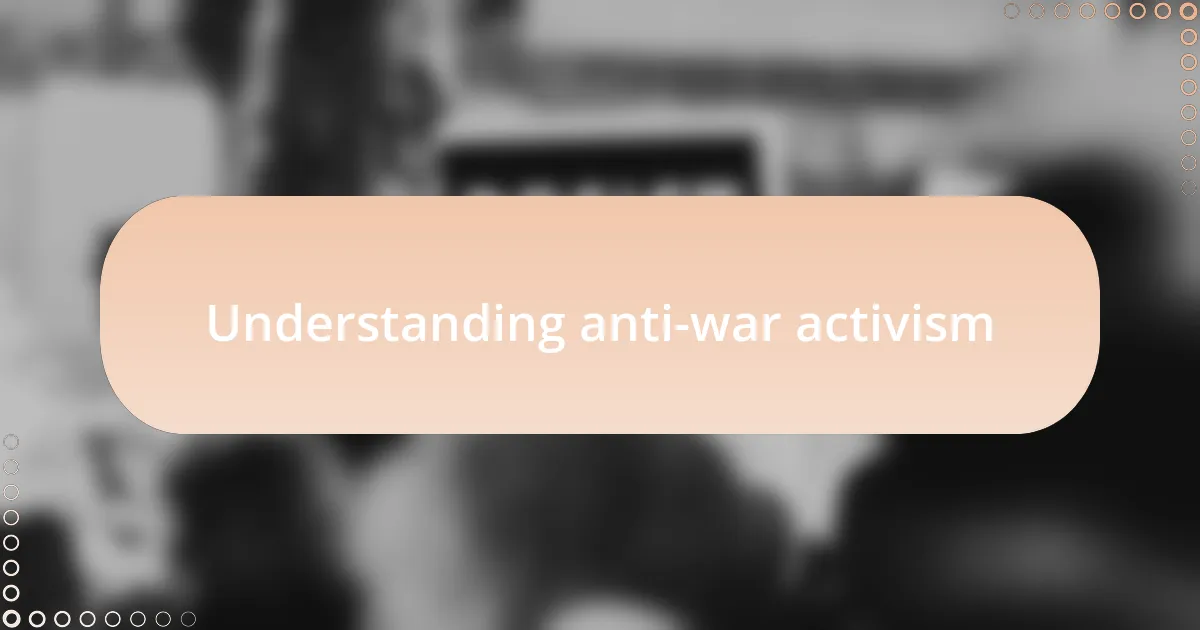
Understanding anti-war activism
Anti-war activism is not just a reaction to conflict; it’s a deeply rooted response based on a profound belief in the sanctity of human life. I often think back to moments of clarity when witnessing the pain caused by war, and it fills me with a sense of urgency to speak out. Why should we accept suffering as an inevitable part of life when we have the power to challenge the systems that perpetuate it?
When I attended my first peace rally, I was struck by the diversity of voices and backgrounds, all united by the same goal. It made me realize that anti-war activism transcends individual experience; it’s a collective movement fueled by shared values and emotions. Are we not all deeply affected by the consequences of war, regardless of which side we stand on?
Moreover, anti-war activism challenges us to reflect on our own complicity in systems of violence. I recall the discomfort I felt when I unveiled my paintings depicting the horrors of war; it was as if I was forced to confront my own beliefs. This process of self-examination is crucial—what role do we play in perpetuating conflict, and what can we do to foster peace instead?
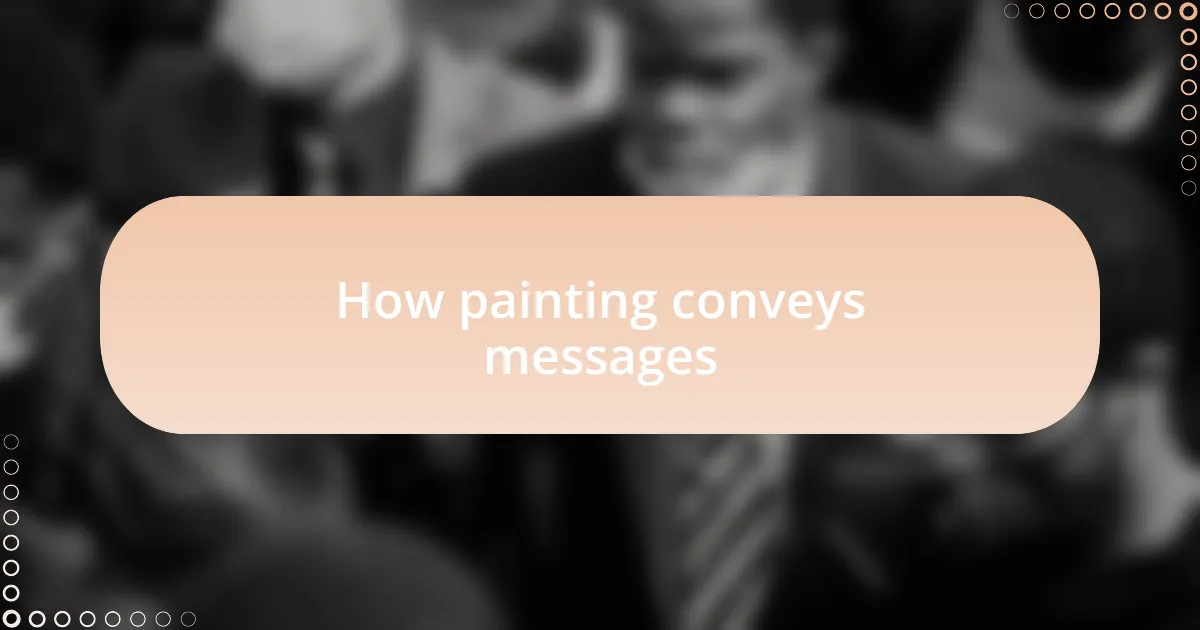
How painting conveys messages
Painting offers a powerful medium for conveying deep emotions and complex ideas, often in ways that words cannot. I remember a time, standing in front of one of my pieces after a particularly intense workshop, realizing that viewers could feel the weight of war through colors and brush strokes. Isn’t it fascinating how a vivid splash of red can evoke feelings of anger, while soft blues might bring a sense of calm or sorrow?
Every canvas can serve as a loudspeaker for resistance, urging viewers to confront uncomfortable truths. I once created a mural that depicted the devastation of a community torn apart by conflict, and the reactions were visceral. People approached with tears in their eyes, and I knew then that my work was not just art; it was a dialogue that challenged them to rethink their assumptions about war and its impacts.
Through painting, I’ve found that I can encapsulate a range of experiences, from personal grief to collective trauma. It’s as if each brush stroke is an invitation to engage, to question, and to reflect on our shared humanity. Often, I’ve wondered: can a painting truly change someone’s perspective? From my experience, I’ve seen it happen, one thoughtful gaze at a time.
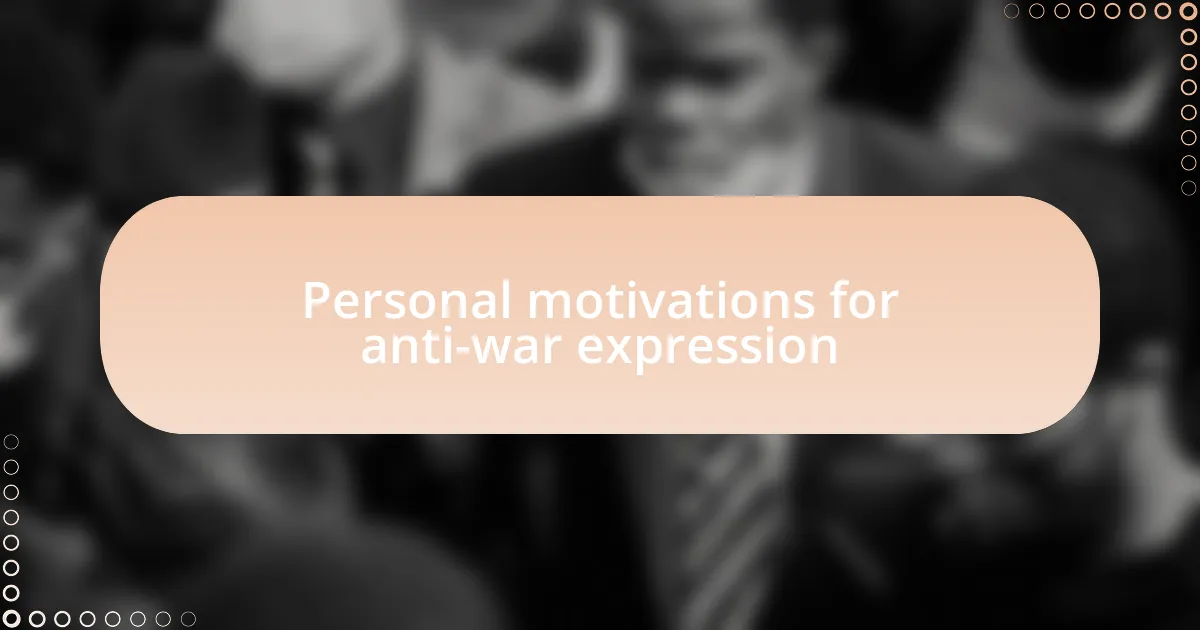
Personal motivations for anti-war expression
When I first began painting as a form of anti-war expression, it stemmed from a deeply personal desire to voice the unvoiced. I distinctly remember one sleepless night, overwhelmed by images of conflict on the news; my heart ached for those suffering. It was in that moment I realized that rather than simply feeling powerless, I could channel my frustrations and hopes onto the canvas.
The act of creating became a cathartic release for me. I once painted a piece inspired by a friend who had lost a loved one in the war. Capturing her pain and resilience through my art felt like a shared experience, as if each brush stroke was a heartfelt message to her and others. Isn’t it empowering to think that art can not only express our grief but also foster connections among those affected by conflict?
I find that my motivations are often fueled by a mix of empathy and urgency. There’s a drive within me to depict stories that might otherwise remain untold. When I painted a piece illustrating the innocence lost during wartime, I hoped to ignite conversations about the human cost of conflict. Isn’t it remarkable how these personal experiences can serve as a powerful catalyst for broader social dialogue? Each canvas becomes an opportunity not just to express resistance but also to incite change and inspire hope.
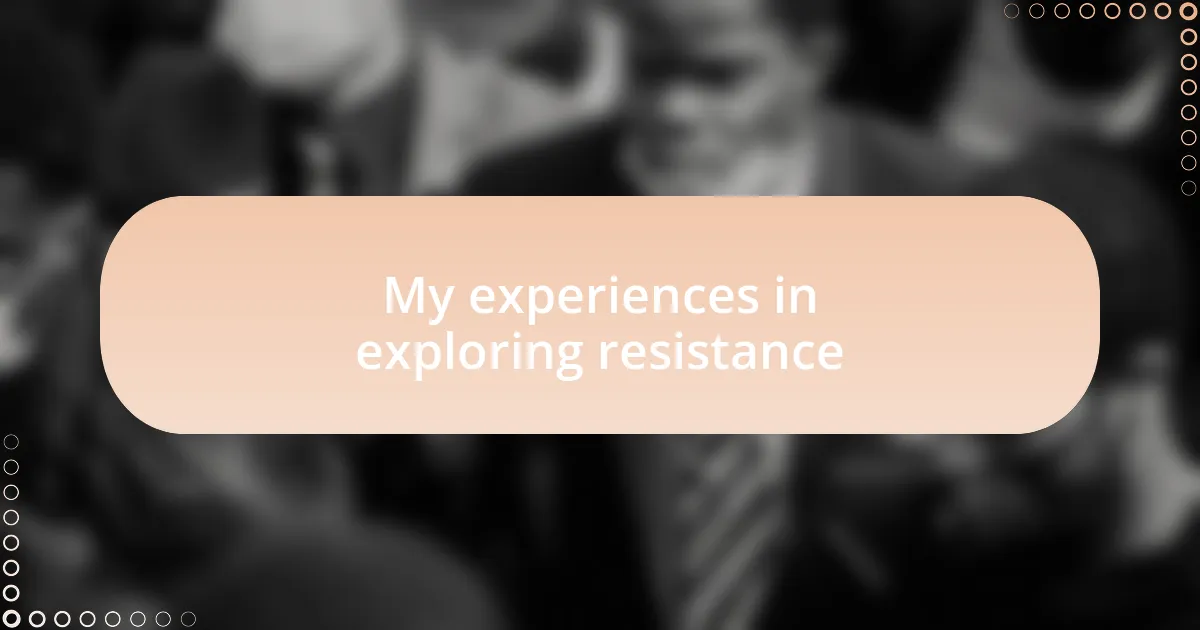
My experiences in exploring resistance
Exploring resistance through painting has been a transformative journey for me. I vividly recall the day I stood before a blank canvas, grappling with the weight of the world’s injustices. As I began to paint, I felt an overwhelming sense of liberation wash over me, like I was finally giving voice to the silent cries of the oppressed. Isn’t it incredible how art can become a tool for resistance, allowing us to share our deepest thoughts and emotions?
One poignant experience involved creating a mural in my community, depicting the struggles of families displaced by war. I worked alongside local artists, and together we poured our hearts into that mural, each stroke reflecting our collective resilience. As we stood back and admired our work, I realized how art has the power not only to tell a story but also to weave communities closer together. Have you ever considered the impact a single piece of art can have on those who view it?
In my journey, I’ve learned that every painting is an intimate conversation—not just between the artist and the canvas, but between the artist and the world. When I painted a piece inspired by the haunting memories of refugees, I wanted to evoke empathy and understanding. I often wonder, how can we foster a sense of shared humanity through our art? This exploration of resistance, for me, is not only about expressing dissent; it’s about cultivating hope and fostering connections that transcend the pain of conflict.
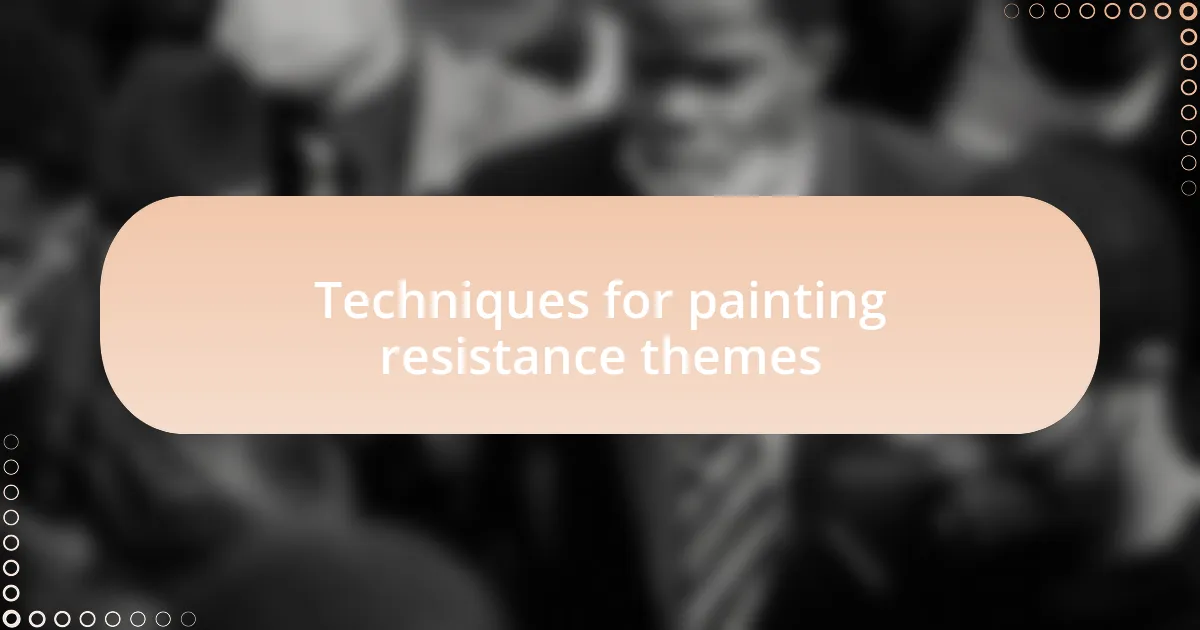
Techniques for painting resistance themes
When painting themes of resistance, I find that symbolism plays a crucial role in conveying deeper messages. For instance, incorporating evocative imagery, such as broken chains or phoenixes rising from ash, can instantly resonate with viewers, sparking discussions about freedom and rebirth. Have you ever noticed how certain symbols can evoke strong emotions, drawing people into a conversation about their significance?
Color choice is another technique that profoundly impacts resistance narratives. While creating a piece that focused on environmental degradation due to war, I chose dark, muted tones to represent despair and destruction, contrasted with vibrant greens to symbolize hope and regeneration. The emotional tension created by this contrast caught the eye of many viewers, prompting them to reflect on the relationship between conflict and our planet. How powerful is it, I wonder, when color becomes a voice in its own right?
Additionally, texture can transform a painting’s message, making it not just visual but tactile. I often experiment by layering materials—like sand or fabric—to give depth to my artworks. This approach not only enriches the visual experience but also invites the viewer to engage with the piece on a sensory level. Have you ever felt compelled to touch a work of art, sensing its struggles and triumphs through its surface? It’s in these unique techniques that the journey of expressing resistance truly unfolds.

Sharing my art for change
As I began sharing my art, I realized it was more than just a symbol of resistance; it became a platform for dialogue and connection. One particular exhibition focused on the human cost of conflict, where viewers shared their own stories of loss and hope. I was deeply moved by how a simple piece could lead to such honest conversations, reminding me that art can bridge divides and foster understanding.
I’ve often felt the weight of responsibility in my role as an artist engaging with political themes. The reactions I receive can be remarkably powerful. A visitor once approached me after viewing a piece depicting the plight of refugees. She shared how it made her rethink her perspective on migration. Moments like that reaffirm my belief that sharing art can challenge narratives and inspire change in ways that words sometimes cannot.
Even now, I marvel at how my creations resonate across diverse audiences. Each stroke on the canvas is infused with my passion, yet it takes on a life of its own when it reaches others. Have you ever experienced that exhilarating moment when your work sparks a conversation you never anticipated? For me, it’s a reminder that art is a shared journey—a collective resistance that empowers us to envision a better world.